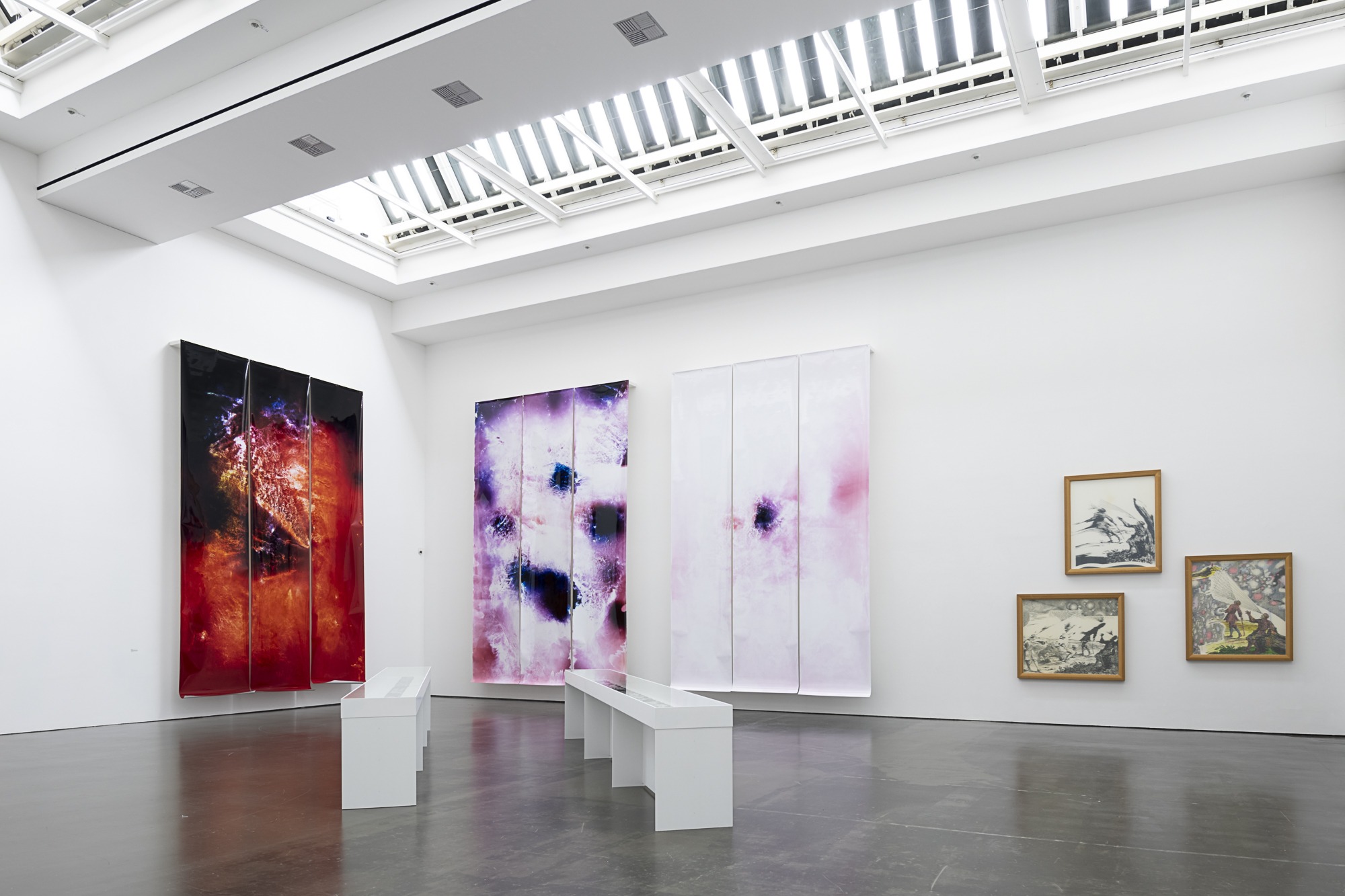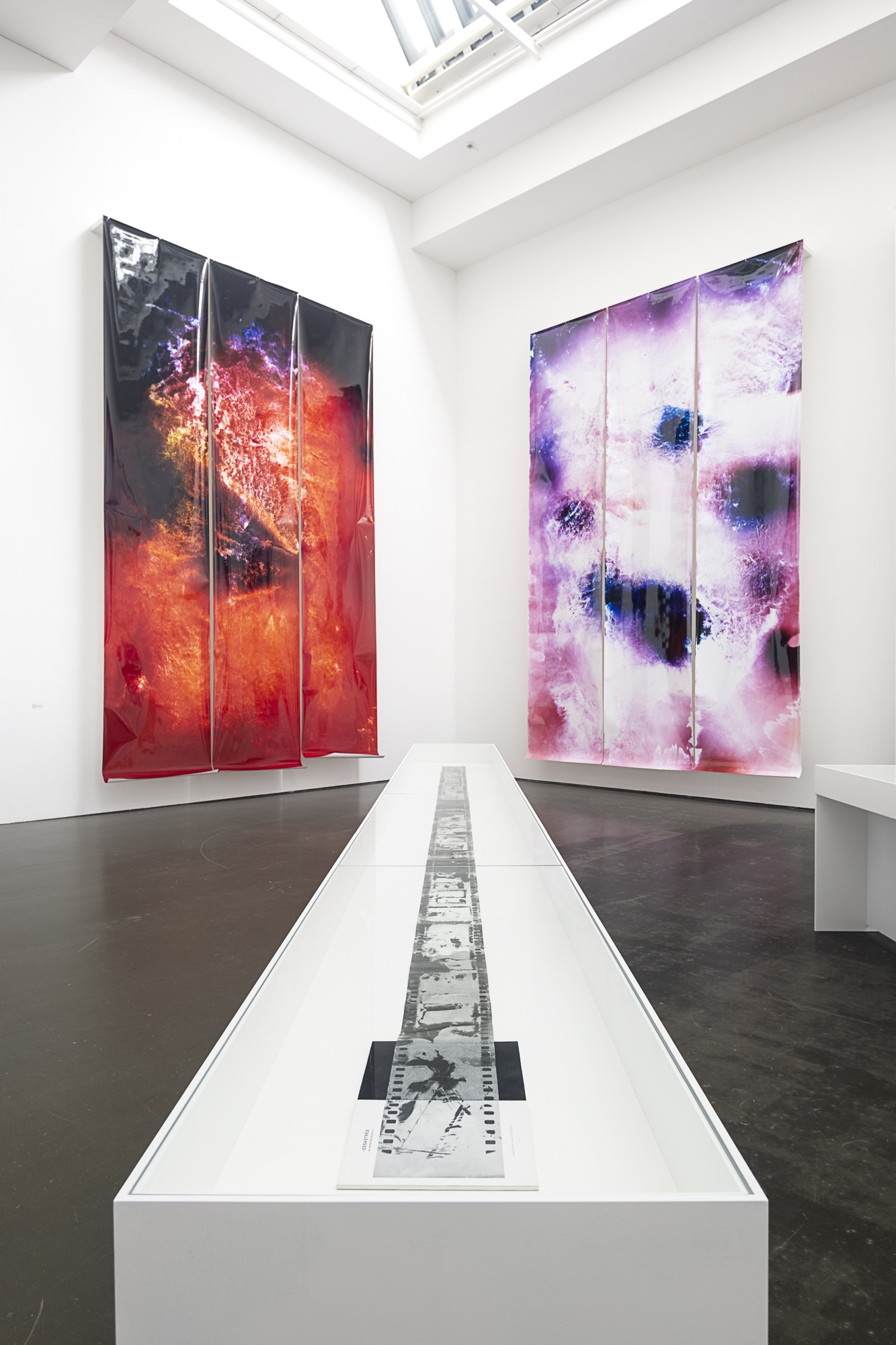Productive Image Interference: Sigmar Polke and Current Artistic Positions
13 Nov 2021 - 06 Feb 2022
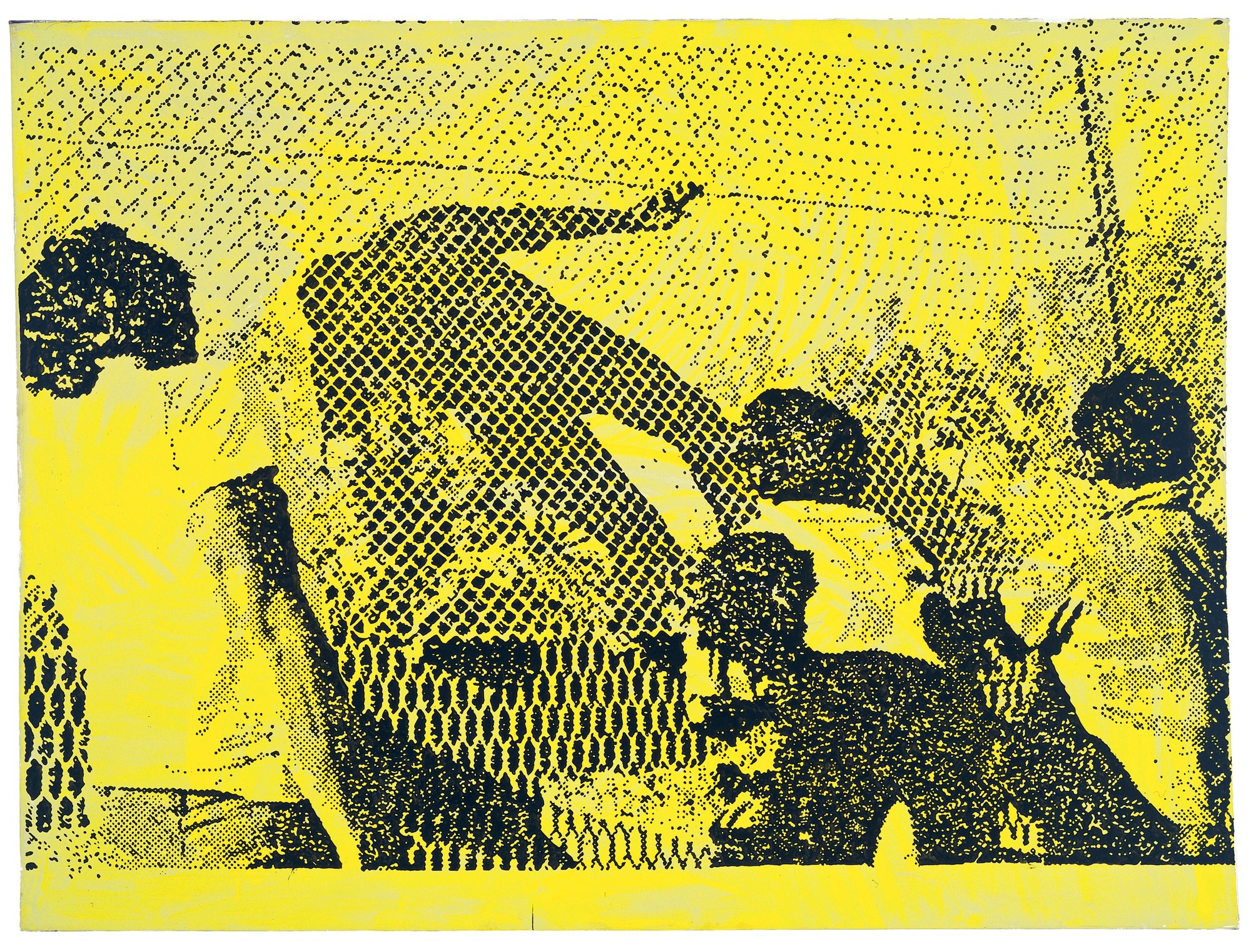

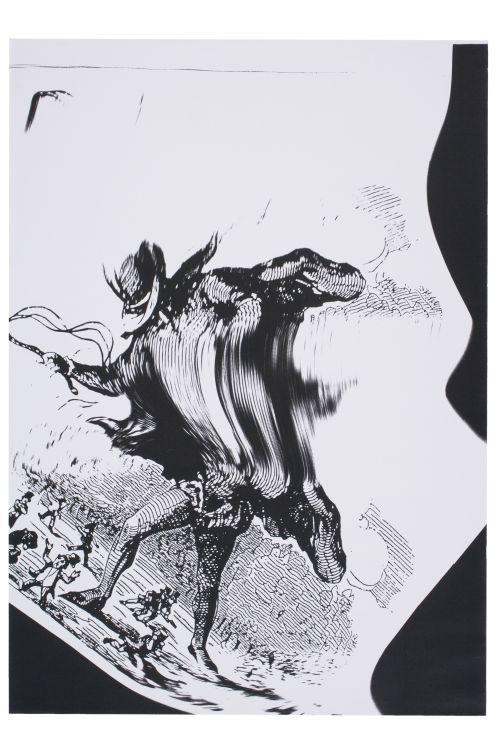
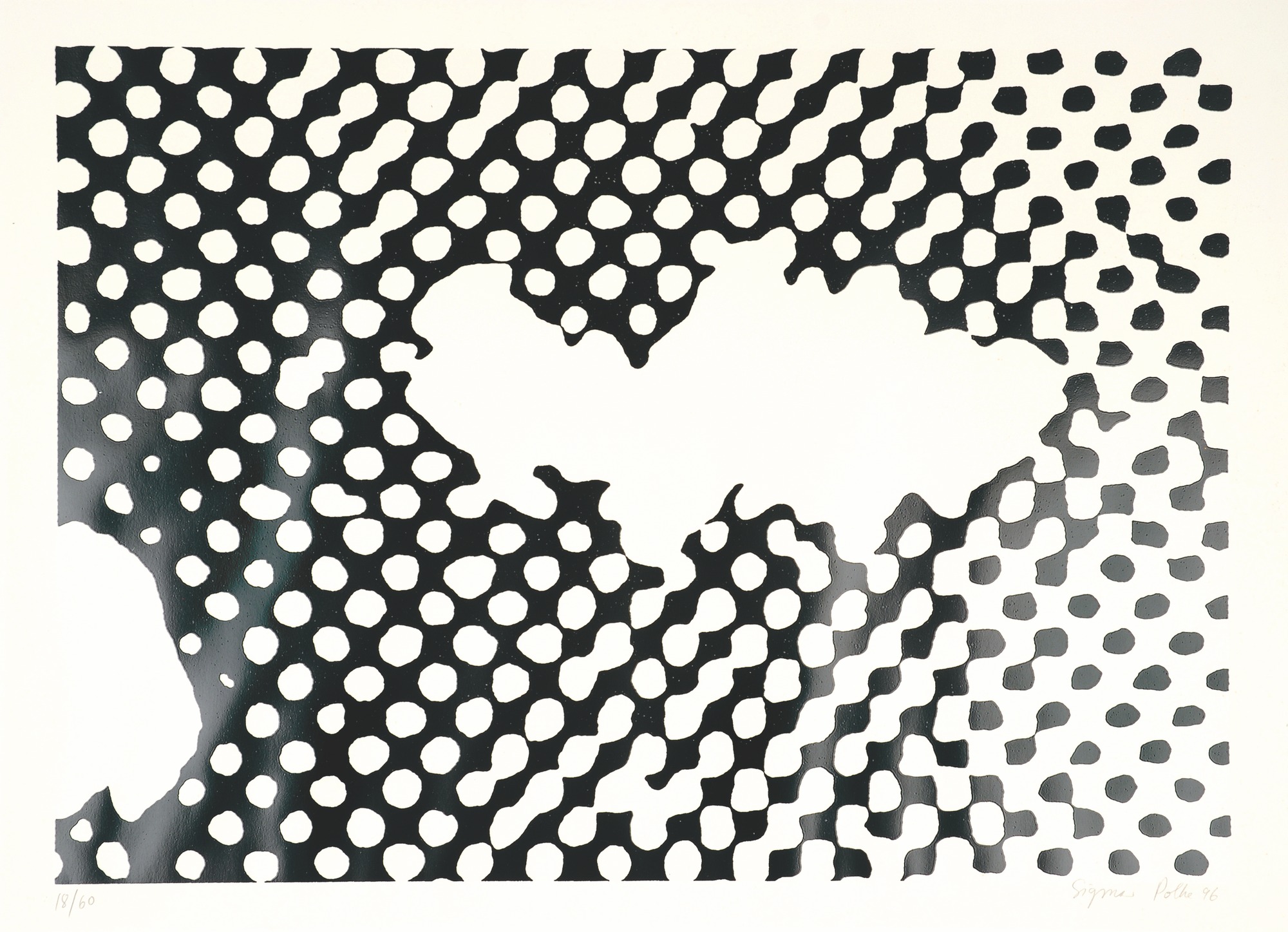
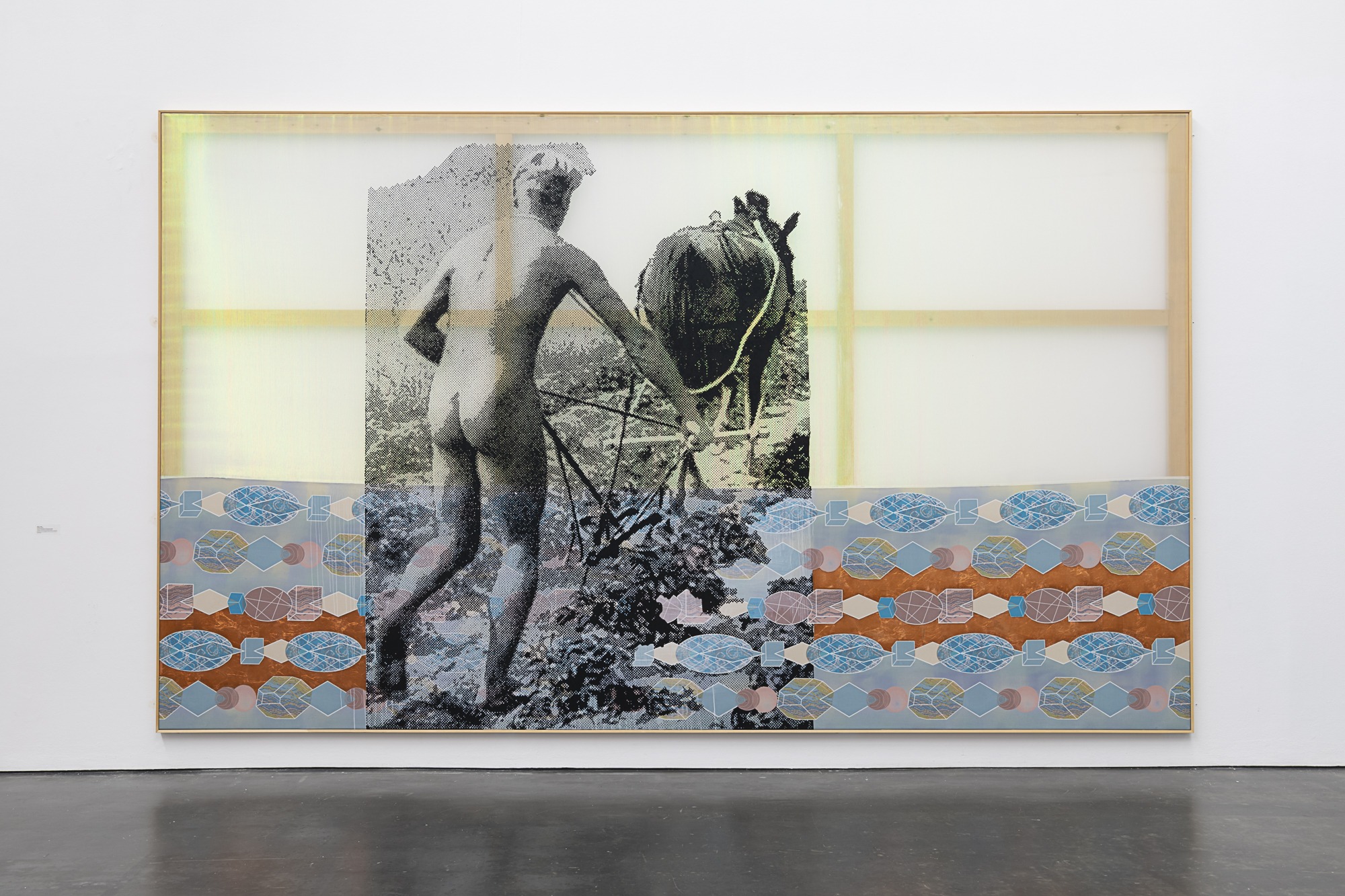
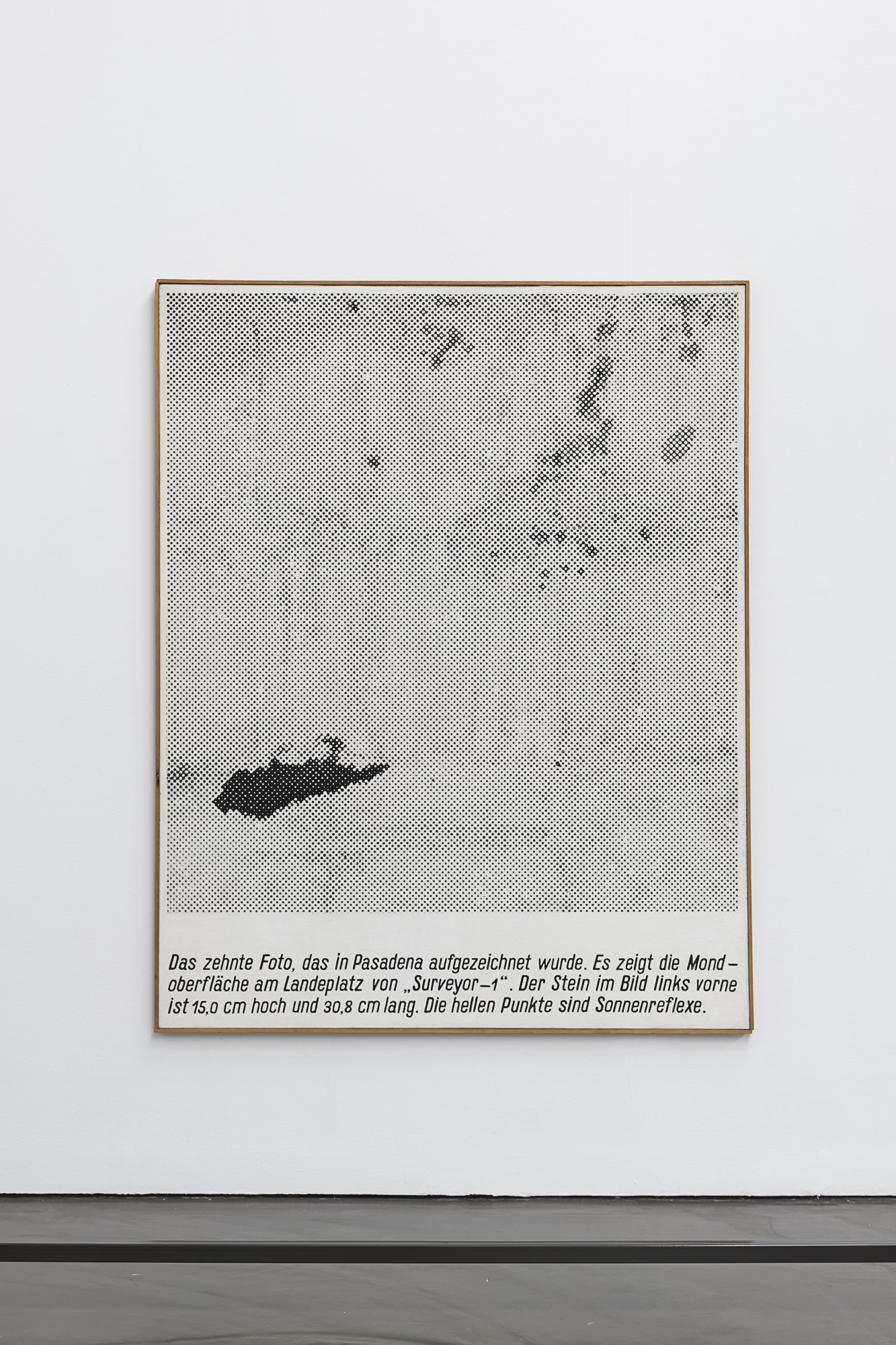

To mark the 80th anniversary of Sigmar Polke’s birth, the Anna Polke Foundation initiated the project Productive Image Interference with the aim of connecting Polke’s work to current discourses about images and the media and thus opening up new perspectives on it. Together with the Kunsthalle Düsseldorf, the foundation is realizing an exhibition that brings Sigmar Polke together with current artistic positions. It features works by Kerstin Brätsch, Phoebe Collings-James, Raphael Hefti, Camille Henrot, Trevor Paglen, Sigmar Polke, Seth Price, Max Schulze, and Avery Singer. The exhibition will be accompanied by a multi-day festival at the Kunstakademie Düsseldorf, which will bring academic and artistic contributions into a dialog. The anniversary project is under the patronage of Isabel Pfeiffer-Poensgen, Minister of Culture and Science of North Rhine-Westphalia, and is funded by the Ministry of Culture and Science of the State of North Rhine-Westphalia, the Kunststiftung NRW, and the Art Mentor Foundation Lucerne.
The project focuses on a central aspect in Sigmar Polke’s oeuvre: his use of existing images based on appropriation and sampling. This is reflected in the title Productive Image Interference, which is understood both as a technique and as an artistic method used by Polke, which not only challenges viewers’ perception, but also has a crucial impact on the production of contemporary art.
Whether reproduction, manipulation, enlargement, multiple exposure, color experiment, misprint, or collage, interference in images or the overlapping and alteration of images and image templates that have been removed from their original context are inherent in Polke’s works and thinking from the beginning of his career. Based on current research, which presents Polke as a universal contemporary and a postmodern artist who makes use of a wide variety of visual and temporal contexts, the exhibition focuses for the first time on a specific approach that characterizes Polke’s oeuvre. Polke’s technique, his use of different media, contexts, and materials, relies on the potential of the supposedly flawed, blurred, and mutable. His works play with the enjoyment of the illusion of images and question the effectiveness of (manipulated) images in different ways and various media. In addition to the paintings shown in the exhibition, this is also evident in his editions, prints, photographic works, artist books, and catalog texts.
This productive interference in images is also a central strategy for a current generation of artists. The works by contemporary international artists show new techniques and methods that emphasize that forms of visual interference remain a productive starting point for creative work today in the negotiation of artistic, cultural, and political issues. The exhibition will illuminate this common attitude toward images in the three following chapters (named after Polke’s works): “You can see what it is.” poses the question of the use and truth value of images and focuses on the political potential of visual interference. “History of Everything” focuses on existing, circulating images as sources and templates for the production of new images and artworks. “Desastres und andere bare Wunder” concentrates on the existence and effectiveness of the materials themselves, which lead to interference in images in a variety of ways.
The negatively connoted word “interference” is reinterpreted: at the latest since the 1960s, destructive processes have proven to be a central category of artistic production. The anniversary project focuses on this shift and highlights the enduring significance and relevance of Polke’s thinking and work.
The artists Kerstin Brätsch and Camille Henrot have developed new works for the exhibition with funding for the project. Based on her longstanding interest in stained glass, and tying in with Sigmar Polke’s windows for the Grossmünster in Zurich, Kerstin Brätsch designed an installation for a gallery at the Kunsthalle Düsseldorf. Inspired by the anniversary theme, Camille Henrot created a new series of works that combine painting, digital collage, and various printing techniques.
An exhibition catalog will be published by Distanz. It includes artistic contributions by Kerstin Brätsch, Camille Henrot, Max Schulze, and Raphael Hefti, discussions between the artists Avery Singer and Albert Oehlen as well as the curator and Polke expert Bice Curiger and the artist Raphael Hefti, and artist texts by Trevor Paglen and Seth Price. These contributions will be supplemented with art-historical texts by Kathrin Barutzki, Katharina Bruns, Nelly Gawellek, Alicia Holthausen, Gregor Jansen, Charlotte Lang, Janice Mitchell, and Sophia Stang.
Artists
Kerstin Brätsch
Kerstin Brätsch’s practice revolves around painting. She combines a conceptual analysis of the medium with an enthusiasm for painterly processes. In order to pose the question of painting’s potential for action and to examine it as a broader field, Brätsch uses traditional applied-art practices such as stained glass, the production of marbled paper and stucco marble (stucco marmo), as well as collaborative projects in order to situate them in the discourse on the history of painting. She thus questions subjectivity and authorship and moves from the personal to the collective.
In 2007 she founded DAS INSTITUT together with Adele Röder. Since 2010 she has collaborated with Debo Eilers under the name KAYA and has worked with friends, colleagues, and artisans. Her works have been featured in solo exhibitions at the Museum of Modern Art in New York (2019), the Fondazione Memmo in Rome (2018), and the Museum Brandhorst in Munich (2017). She has participated in important group exhibitions at Camden Art Centre in London (2020), the Deichtorhallen in Hamburg (2020), and the Stedelijk Museum in Amsterdam (2019). In 2020 Brätsch received the Helen Frankenthaler Award for Painting from the Foundation for Contemporary Arts in New York, and in 2017 she received the Edward Munch Art Award from the Munchmuseet in Oslo. In 2019 she was awarded the Villa Romana Prize as KAYA together with Debo Eilers.
Phoebe Collings-James
Phoebe Collings-James’s works often dispense with linear narratives. Instead, her works function as “emotional remnants”: they attest to the awareness of feelings, the traces left by violence or language, and the longings that go hand in hand with life and survival in hostile environments. Her most recent ceramic works deal with objects as subjects. As Young Nettle, her musical alias, she frequently works with sound that surrounds her completely. She is also part of B.O.S.S., a QTIBIPOC sound system based in south London.
With a tendency toward intensely sensual, emotional sounds, penetrating bass, and wild, lyrical progressions, she develops the sound design for her own music productions, such as Sounds 4 Survival, a rising and falling live performance that was created together with SERAFINE1369 and which raises the question of in what form an anti-assimilationist practice can take shape. As a recipient of the Freelands Lomax Ceramics Fellowship in 2021, she will be the focus of an exhibition at the Camden Arts Centre in London in autumn 2021. Collings-James’s Mudbelly ceramics studio, which she initially used for her own practice and research projects, has since expanded and now includes a shop and educational offerings in the form of free ceramic courses offered by Black ceramists for Black people in London.
Raphael Hefti
In his work, Raphael Hefti pursues an experimental approach to sculpture and its materials. Hefti’s practice draws from his fascination with industrial and post-industrial processes, which he appropriates, reverses, and sometimes explodes. His intensive engagement with industries and experts reveals truths inherent in conventional processes. By going beyond technical purpose, his works celebrate materiality itself. The artist presents a primacy of materials in a very unique way, often in the light of Murphy’s law.
Hefti was born in 1978 and grew up in Biel/Bienne, Switzerland. He completed an electronics apprenticeship and then studied at the École cantonal d’art de Lausanne and the Slade School of Fine Art in London, where he graduated with a master’s degree. He has had solo exhibitions at the Kunsthalle Basel (2020), the Museum Boijmans Van Beuningen in Rotterdam (2017), the Fondation Vincent Van Gogh in Arles (2015), the Centre d’Art Contemporain Genève, (2015), Nottingham Contemporary (2014), the CAPC Bordeaux (2013), and Camden Art Centre in London (2012).
Camille Henrot
Camille Henrot was born in Paris in 1978 and lives and works in Berlin and New York. Her practice spans film, painting, drawing, sculpture, and installations. She takes references from literature, psychoanalysis, social media, cultural anthropology, self-help concepts, as well as the banality of everyday life and uses them to examine what it means to be both a private individual and a global subject.
Her film Grosse Fatigue came out of a scholarship at the Smithsonian Institute in 2013 and earned her a Silver Lion at the 55th Venice Biennale (2013). In 2014 she received the Nam June Paik Award, and in 2015 the Edvard Munch Award. Her works have been shown in solo exhibitions at the National Gallery of Victoria in Melbourne (2021), the Kestner Gesellschaft in Hanover (2021), the Tokyo Opera City Art Gallery (2019), the Palais de Tokyo in Paris (2017), the Fondazione Memmo in Rome (2016), Chisenhale Gallery in London (2014), the Kunsthal Charlottenburg in Copenhagen (2014), Bétonsalon in Paris (2014), the New Museum in New York (2014), the Schinkel Pavillon in Berlin (2014), and the New Orleans Museum of Art (2013).
Trevor Paglen
In addition to the production of pictures and sculptures, Trevor Paglen’s work as an artist also includes investigative journalistic and literary practices as well as technical constructions and a number of other disciplines. Paglen’s works have been shown in solo exhibitions at the Carnegie Museum of Art in Pittsburgh (2020), the Fondazione Prada in Milan (2019), the Barbican Centre in London (2019), and the Smithsonian Museum of American Art in Washington, D.C. (2018) as well as in group exhibitions at the Metropolitan Museum of Art in New York (2018), the San Francisco Museum of Modern Art (2018), Tate Modern in London (2010), and numerous other exhibition venues.
Paglen sent an artwork to earth orbit in collaboration with Creative Time and MIT, contributed research and camera work to the Oscar-winning film Citizenfour, and created a radioactive public sculpture for the exclusion zone in Fukushima, Japan. He is the author of several books and numerous articles on topics such as experimental geography, artificial intelligence, state secrecy, military symbolism, photography, and visuality. He received the Electronic Frontier Foundation’s Pioneer Award in 2014 and the Deutsche Börse Photography Prize in 2016. In 2017 Paglen was named a MacArthur Fellow. He earned his MFA from the Art Institute of Chicago and his PhD in geography from the University of California, Berkeley.
Seth Price
Seth Price was born in 1973 in Sheikh Jarrah, Palestine and lives and works in New York. The focus of his work is an intensive exploration of industrial materials. In his engagement with sculpture, film, video, photography, design, painting, drawing, textiles, fashion, web design, music, and poetry, his practice is always about the unstable nature of what constitutes an image as it passes through different forms of presentation and methods of dissemination. Price utilizes the possibilities of the material as well as the technical processes that are applied to images. Technical mistakes and unforeseen effects that can arise in such processes also influence his work. Price’s methods of processing transform familiar motifs into almost foreign objects that put our visual habits to the test.
His recent solo exhibitions include presentations at the Aspen Art Museum (2019), the Museum of Modern Art PS1 in Long Island City, New York (2018), the ICA in London (2017), the Stedelijk Museum in Amsterdam (2017), and the Museum Brandhorst in Munich (2017). His works have been shown in group exhibitions at institutions such as K20, Kunstsammlung NRW in Düsseldorf (2020), Estancia FEMSA, Casa Luis Barragán in Mexico City (2019), the Center for Contemporary Art in Tel Aviv (2019), the Museum of Modern Art in New York (2019), and LUMA in Arles (2018).
Sigmar Polke
Sigmar Polke was born on 13 February 1941 in Oels (Silesia). During World War II, his family fled to Thuringia, and in 1953 they settled in Düsseldorf. There Polke apprenticed in a stained glass factory before studying at the Kunstakademie Düsseldorf from 1961 to 1967. From 1970 to 1971 he was a visiting professor and then from 1977 to 1991 a professor at the Hochschule für bildende Künste in Hamburg. In 1972, 1977, and 1982, Polke participated in documenta in Kassel. In 1986 he was recognized for his contribution to the 42nd Venice Biennale with a Golden Lion. His work has been awarded numerous other prizes, including the Praemium Imperiale from the Japan Art Association (2002), the Rubens Prize of the City of Siegen (2007), and the Roswitha Haftmann Prize (2010). In 2009 Polke completed his last major group of works, the church windows for the Grossmünster in Zurich.
Sigmar Polke’s extensive work includes painting, works on paper, photography, film, objects, and graphic art. His unconventional and experimental use of different media and materials as well as his rich imagery made him one of the most influential German post-war artists, and his work continues to inspire young artists to this day. Polke lived and worked in Cologne from 1978 until his death in June 2010.
Max Schulze
In his work, Max Schulze deals with the various possibilities and processes of creating and perceiving images: How do abstraction and figuration relate to one another? Where does a picture end? What causes us to recognize appearances as perceptible? Schulze experiments with different materials and ways of applying paint. Images from the media are often the starting point for his works.
Max Schulze studied fine art and painting at the Kunstakademie Düsseldorf and graduated as a master class student of Jörg Immendorff in 2005. Since April 2019 he has been professor of painting at Paderborn University. He has received numerous grants, including the Friedrich-Vordemberge-Stipendium from the City of Cologne, the Förderpreis für Bildende Kunst from the City of Düsseldorf, and a grant from the Stiftung Kunstfonds in Bonn. He has had solo and group exhibitions at the Museum Ratingen (2020/21), the Museum Goch (2014), the Hamburger Kunstverein (2013), the Bonner Kunstverein (2010), and the Museum Haus Lange in Krefeld (2003), among others. Since 2007 he has run the archive and publishing house Archiv Untergrund. In 2017 he was curator of the exhibition Singular / Plural: Kollaborationen in der Post-Pop-Polit-Arena (along with Petra Lange-Berndt, Dietmar Rübel, and Gregor Jansen) at the Kunsthalle Düsseldorf.
Avery Singer
Avery Singer was born in New York in 1987. She studied at Cooper Union in New York (2005–10) and the Städelschule in Frankfurt am Main (2008). She lives and works in New York.
Singer’s iconographically complex airbrush paintings combine an aesthetic of the early 20th century with 3D computer modeling, cinematic imagery, and abstractions that are familiar to us from the digital world. Her compositions deal with light and space in the digital age. In her painting she translates the limitless space and illusion of depth from 3D models into the analog space of the canvas by layering visual data and painting techniques.
Solo exhibitions of her works have taken place at the Museum Ludwig in Cologne (2019), the Kölnischer Kunstverein (2017), Secession in Vienna (2016), the Stedelijk Museum in Amsterdam (2016), the Fondazione Sandretto Re Rebaudengo in Turin (2015), the Hammer Museum in Los Angeles (2015), and the Kunsthalle Zürich (2014). She participated in the 58th Venice Biennale in 2019.
Curators
Kathrin Barutzki
Project manager and curator, Anna Polke Foundation
Kathrin Barutzki studied art history, German literature, and modern history in Cologne, Bonn, and Rome. Since graduating in 2011, she has worked at the Ludwig Forum for International Art in Aachen, the Kunsthalle Düsseldorf, the Estate of Sigmar Polke, as a freelance writer and curator, and as a lecturer at the Kunstakademie Düsseldorf. She completed her doctorate at the University of Cologne with a dissertation on the “activation” of conceptual art, photography, and multiples in New York circa 1970. She has been working for the Anna Polke Foundation since 2018.
Nelly Gawellek
Project manager and curator, Anna Polke Foundation
Nelly Gawellek studied art history and rhetoric in Tübingen. Since graduating in 2011, she has worked as a gallery director in Cologne and Berlin and as a research assistant for the Estate of Sigmar Polke in Cologne. As a freelance writer and curator, she also deals with contemporary art and is a volunteer member of the board of And She Was Like: BÄM! She has been working for the Anna Polke Foundation since 2018.
Gregor Jansen
Director, Kunsthalle Düsseldorf, curator
Gregor Jansen was appointed artistic director of the Kunsthalle Düsseldorf in November 2009 and began serving in this position in January 2010. He studied art history, architectural history, and philosophy at RWTH Aachen University and earned his doctorate in 1998 with a dissertation on Eugen Schönebeck. Since 1991 he had worked as a curator, art critic, and writer, and taught visual studies and media theory at several universities in Germany and the Netherlands. From 2005 to the end of 2009, Jansen was director of the ZKM | Museum für Neue Kunst in Karlsruhe.
In Düsseldorf he organized groundbreaking exhibitions on the media art pioneer Ferdinand Kriwet, the painter and Turner Prize winner Tomma Abts, the renowned photographic artist Thomas Ruff, and the American sculptor and former rector of the Kunstakademie Düsseldorf Rita McBride, as well as thematic exhibitions such as Schaf und Ruder, Wirtschaftswerte, and Singular/Plural.

